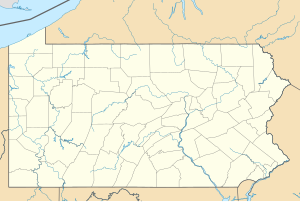
Back Олимпия (бронепалубен крайцер, 1893) Bulgarian USS Olympia (C-6) Czech Olympia (Schiff, 1895) German USS Olympia (C-6) Spanish یواساس المپیا (سی-۶) Persian USS Olympia (C-6) Finnish USS Olympia (C-6) French オリンピア (防護巡洋艦) Japanese USS Olympia (1895) Dutch USS Olympia (C-6) Polish
 USS Olympia (C-6), port bow, 10 February 1902.
| |
| History | |
|---|---|
| Name | Olympia |
| Namesake | The City of Olympia, Washington |
| Ordered | 7 September 1888 |
| Builder | Union Iron Works, San Francisco, California |
| Laid down | 17 June 1891 |
| Launched | 5 November 1892 |
| Sponsored by | Miss Ann B. Dickie |
| Commissioned | 5 February 1895 |
| Decommissioned | 9 November 1899 |
| Recommissioned | January 1902 |
| Decommissioned | 2 April 1906 |
| Recommissioned | 1916 |
| Decommissioned | 9 December 1922 |
| Reclassified |
|
| Refit | 1901, 1902, 1916 |
| Stricken | 11 September 1957 |
| Identification |
|
| Nickname(s) | "Queen of the Pacific", "The Winged O" |
| Fate | Restored as Museum Ship |
| Status | Museum ship. |
| General characteristics (as built) | |
| Type | Protected cruiser |
| Displacement | |
| Length | 344 ft 1 in (104.88 m) |
| Beam | 53 ft (16 m)[2][1] |
| Draft | 21 ft 6 in (6.55 m) |
| Installed power | 17,000 ihp (13,000 kW)[2] |
| Propulsion |
|
| Speed | 21.7 knots (40.2 km/h; 25.0 mph)[1] |
| Range | 6,000 nmi (11,000 km; 6,900 mi) at 10 knots (19 km/h; 12 mph)[1] |
| Capacity | 1,169 short tons (1,060 t) coal (maximum)[2] |
| Complement | 33 officers and 395 enlisted |
| Armament |
|
| Armor | |
| General characteristics (1917) | |
| Armament | 10 × 5 in (127 mm)/51 cal Mark 8 guns (10×1) |
Olympia | |
 USS Olympia (C-6) at the Independence Seaport Museum in 2007. | |
| Location | Penn's Landing Marina, South Columbus Blvd. Philadelphia, Pennsylvania, United States |
| Coordinates | 39°56′37″N 75°8′27″W / 39.94361°N 75.14083°W |
| Area | less than one acre |
| Built | 1892 |
| Built by | Union Iron Works of San Francisco |
| NRHP reference No. | 66000692[4] |
| Added to NRHP | 15 October 1966 |
USS Olympia (C-6/CA-15/CL-15/IX-40) is a protected cruiser that saw service with the United States Navy from her commissioning in 1895 until 1922. She is currently a museum ship in Philadelphia.
Olympia became famous as the flagship of Commodore George Dewey during the Battle of Manila Bay in the Spanish–American War in 1898. The ship was decommissioned after returning to the U.S. in 1899, but was returned to active service in 1902. She served until World War I as a training ship for naval cadets and as a floating barracks in Charleston, South Carolina. In 1917, she was mobilized again for war service, patrolling the American coast and escorting transport ships.
After World War I, Olympia participated in the 1919 Allied intervention in the Russian Civil War and conducted cruises in the Mediterranean and Adriatic Seas to promote peace in the unstable Balkan countries. In 1921, the ship carried the remains of World War I's Unknown Soldier from France to Washington, D.C., where his body was interred in Arlington National Cemetery. Olympia was decommissioned for the last time in December 1922 and placed in reserve.
In 1957, the U.S. Navy ceded title to the Cruiser Olympia Association, which restored the ship to her 1898 configuration. Since then, Olympia has been a museum ship in Philadelphia, where it is now part of the Independence Seaport Museum. Olympia was designated a National Historic Landmark in 1966.
Olympia is the oldest steel American warship still afloat.[5] Repairs, estimated at $10 to 20 million, were desperately needed to keep Olympia afloat, and in 2010 the Independence Seaport Museum considered finding a new steward for the ship. By 2014, the museum reversed its plan to find a new steward and soon obtained funding from private donors as well as federal and state agencies to begin work on repairing the ship.
The museum invested in extensive stabilization measures including reinforcing the most deteriorated areas of the hull, expanding the alarm system, installing a network of bilge pumping stand pipes (which will provide greater damage control capability in the unlikely event of a hull breach), extensive deck patching and extensive repair and recoating of the ship's rigging. This work was made possible by donations from the National Trust for Historic Preservation, the U.S. Cruiser Sailors Association and many individual donors.[6][7] By 2017, the museum completed the first phase of repairs to the ship and has embarked on an ambitious national campaign to raise the $20 million needed to dry-dock Olympia and address waterline deterioration of the hull.[8]
- ^ a b c d Ford (2001), p. 271.
- ^ a b c d e (2001) Jane's Fighting Ships of World War I, pg. 141. Random House, London. ISBN 1-85170-378-0
- ^ a b Ford (2001), p. 272.
- ^ "National Register Information System". National Register of Historic Places. National Park Service. 9 July 2010.
- ^ Loviglio, Joann (6 September 2010). "Olympia, 2-war naval veteran, battles for survival". Associated Press. Archived from the original on 9 September 2010. Retrieved 7 September 2010.
- ^ Naval History Magazine (1 August 2016). "Olympian Effort to Save the Olympia". US Naval Institute. Retrieved 6 April 2017.
- ^ "Will new ways to experience Olympia keep the cruiser afloat?". PlanPhilly. Retrieved 26 May 2017.
- ^ "Work Continues To Save Historic USS Olympia". CBS Philadelphia. Associated Press. 5 July 2013. Retrieved 13 February 2015.
© MMXXIII Rich X Search. We shall prevail. All rights reserved. Rich X Search
